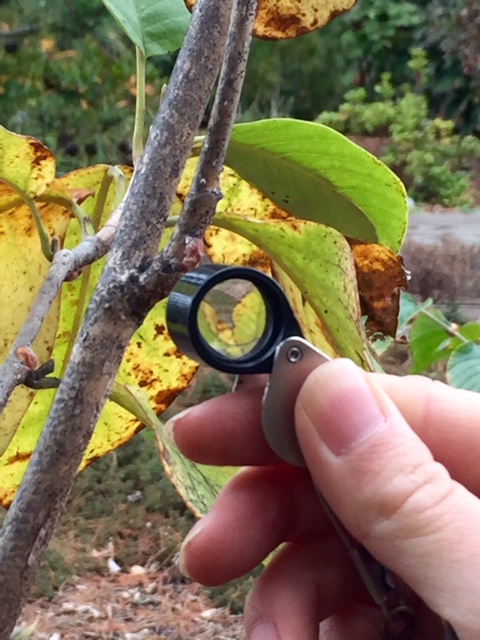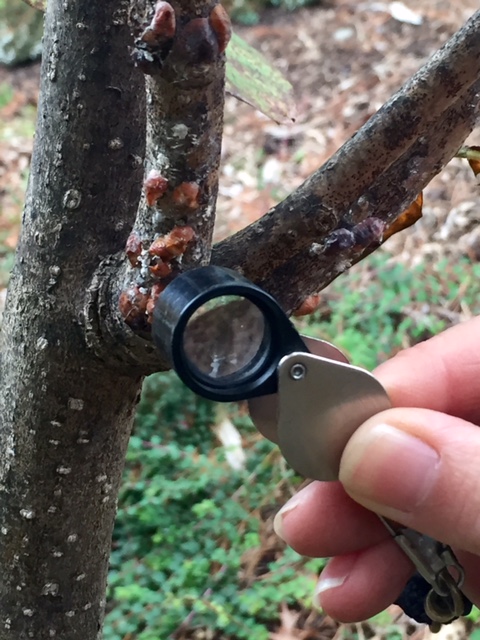![]()
Integrated Pest Management
Sustainable Landscapes Trail at Cornell University
Cornell Botanic Gardens and Cornell’s Grounds Department follow Integrated Pest Management (IPM) procedures to maintain Cornell’s outdoor landscapes. The IPM approach involves multiple non-chemical techniques for controlling pests and considers using pesticides only when all other approaches are not available or appropriate.
IPM first was created by scientists at Cornell in the mid-1970’s to reduce pesticide use on agricultural crops. In 1985, the New York State IPM Program was established through legislation added to the Agriculture and Markets Law, strengthening and broadening the Cornell IPM Program that was already underway. The NYS IPM Program’s mission is to “develop sustainable ways to manage pests and helps people to use methods that minimize environmental, health, and economic risks”. In the 1990’s, the New York State IPM Program established a community outreach program to extend IPM education and support to all areas of pest management not covered by Agricultural IPM including schools, golf courses, athletic fields, landscapes and structures requiring pest management. It is used at Cornell Botanic Gardens and by Cornell Grounds Department in order to combat plant health issues in a sustainable, less toxic manner.
Return to Sustainable Landscape Trail Sites Homepage
Why is this site sustainable?
IPM is integrated because it brings together a range of biological, organic, cultural, mechanical, and chemical options for pest problems, such as using predatory wasps to kill aphids which can severely damage plants. Although IPM used to focus on controlling insect pests, it now includes approaches to combating fungi, bacteria, viruses, weeds, wildlife, and other issues that harm plants. Integrated pest management is sustainable in that it rarely relies on just one tactic—it integrates several approaches starting with those less toxic to prevent pests entirely or reduce them to acceptable levels.
IPM Details
Cornell Botanic Gardens employs two full time staff to implement the IPM approach to controlling insect pests and diseases on our plant collections. They work closely with staff horticulturalists to pre-empt any damage caused by plant pests and diseases. Cornell Botanic Gardens’ IPM staff follow a yearly calendar to evaluate all plants for the presence of insect pests and diseases and use seven steps as guidelines for determining the appropriate method of control.
-
Prepare: Be aware of the potential problems and opportunities at your site. Know your pests and threats—and keep good records.
-
Prevent: Protect your landscape and buildings for the long term.
-
Monitor: Scout your landscape and buildings to find out which pests are on your site or in your space.
-
Analyze: Each plant species has a threshold, or how much damage it can take. Knowing this data will help decide whether it’s time to act.
-
Manage: Choose among tactics that provide the best balance of economic and environmental cost and effectiveness while reducing the risk of harming the health of the environment and people.
-
Apply: When management is justified, do it right.
-
Reevaluate: Look at your results, fine-tune your response—and make proactive plans for next time.
In addition to monitoring plant collections for pests and diseases, Cornell Botanic Gardens strives to prevent pest and disease damage by creating landscapes that benefit a diversity of animal and insect species.
They do this by:
-
Using hardy and disease- and pest- resistant plant species.
-
Properly planting, fertilizing, watering, pruning and mowing to maximize the health of all plants.
-
Mulching to reduce the emergence of weeds.
-
Introducing naturally occurring organisms to control known pests in our greenhouse, such as the aphid parasite Aphidius colemani.
Scouting for pests is a critical component of IPM, as it eliminates the need for preventative and routine pesticide application. Scouting involves surveying plants year round to determine the presence, identity and quantity of pests. Staff determine when to scout for specific insect species based on growing degree days, which is a calculation to convert daily temperatures into heat units. Because each insect species requires a specific amount of accumulated heat to awaken in the spring, a range of growing degree days is assigned to specific species. This allows staff to plan when to scout targeted insects.
Before choosing chemical pesticides, staff consider a variety of mechanical, biological and cultural control techniques such as mopping away ants’ “scent trails” to food (cultural), using special vacuums for beetles (mechanical) or applying fungus to infect gypsy moths (biological).


